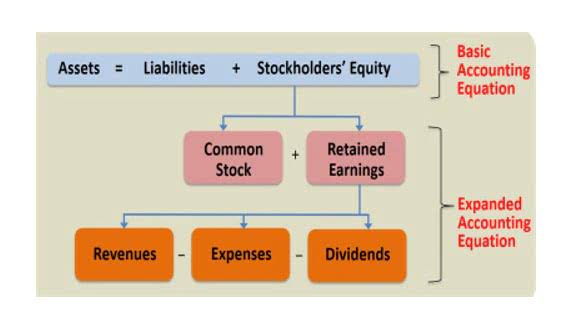
But as time goes by, the fixed asset may experience problems due to wear and tear, which would result in repairs and maintenance costs. That’s why depreciation expense is lower in the later years because of the fixed asset’s decreased efficiency and high maintenance cost. Start by computing the DDB rate, which remains constant throughout the useful life of the fixed asset. However, depreciation expense in the succeeding years declines because we multiply the DDB rate by the undepreciated basis, or book value, of the asset.
Declining Balance Method of Depreciation Explained in Video
In summary, understanding these advanced topics helps ensure accurate financial reporting and compliance with accounting standards. Sara wants to know the amounts of depreciation expense and asset value she needs to show in her financial statements prepared on 31 December each year if the double-declining method is used. For example, if an asset has a salvage value of $8000 and is valued in the books at $10,000 at the start of its last accounting year. In the final year, the asset will be further depreciated by $2000, ignoring the rate of depreciation.
Method 2 – Applying DDB Function (Double Declining Balance Depreciation Formula) in Excel
Second, it is more reflective of an asset’s decline in value over time, as assets tend to lose more value in the early years of use. Double Declining Balance (DDB) and Straight-Line (SL) depreciation are the two most popular methods used to calculate depreciation for fixed assets. While straight-line depreciation is the simplest method, Double Declining Balance is a more real estate cash flow complex and sophisticated approach.
How do you calculate Double Declining Balance Depreciation?
- Double declining balance depreciation is an accelerated depreciation method that charges twice the rate of straight-line deprecation on the asset’s carrying value at the start of each accounting period.
- As you can see there is a heavy focus on financial modeling, finance, Excel, business valuation, budgeting/forecasting, PowerPoint presentations, accounting and business strategy.
- The double declining balance method accelerates depreciation charges instead of allocating it evenly throughout the asset’s useful life.
- Start by computing the DDB rate, which remains constant throughout the useful life of the fixed asset.
- He has worked as an accountant and consultant for more than 25 years and has built financial models for all types of industries.
- This makes DDB ideal for assets that lose value quickly, while straight-line might be better for assets with a more uniform usage and value decline over time.
As you can see there is a heavy focus what are retained earnings on financial modeling, finance, Excel, business valuation, budgeting/forecasting, PowerPoint presentations, accounting and business strategy. Rapid methods offer more tax savings in the early years and fewer savings in later years. Since managers of businesses take the Time Value of Money into consideration, it’s better to have the savings early rather than later.
- If the company was using the straight-line depreciation method, the annual depreciation recorded would remain fixed at $4 million each period.
- As years go by and you deduct less of the asset’s value, you’ll also be making less income from the asset—so the two balance out.
- This formula accelerates depreciation by applying a higher expense in the earlier years of the asset’s useful life.
- Depreciation is the act of writing off an asset’s value over its expected useful life, and reporting it on IRS Form 4562.
- We provide tips, how to guide, provide online training, and also provide Excel solutions to your business problems.
Calculation Steps

The company estimates that its useful life will be five years and its salvage value at the end of its useful life would be $1,250. Now you’re going to write it off your taxes using the double depreciation balance method. (An example might be an apple tree that produces fewer and fewer apples as the years go by.) Naturally, you have to pay taxes on that income. But you can reduce that tax obligation by writing off more of the asset early on.


The cost of an asset normally comprises depreciation and repairs and maintenance. The best way to explain the double-declining method of depreciation is to look at some simple examples. Through them I’ll show you which accounts and journal entries are required, and how to switch depreciation method in the middle of an asset’s life in order to fully depreciate the asset. Accruing tax liabilities in accounting involves recognizing and recording taxes that a company owes but has not yet paid. HighRadius offers a cloud-based Record to Report Suite that helps accounting professionals streamline and automate the financial close process double declining balance method for businesses. We have helped accounting teams from around the globe with month-end closing, reconciliations, journal entry management, intercompany accounting, and financial reporting.
- This method helps businesses save on taxes early on by showing higher expenses in the first few years.
- If an asset’s book value falls below its salvage value during the depreciation process, adjust the depreciation expense in that year to ensure it doesn’t go below the salvage value.
- The balance of the book value is eventually reduced to the asset’s salvage value after the last depreciation period.
- Therefore, under accelerated depreciation, an asset faces greater deductions in its value in the earlier years than in the later years.

While the method is a valuable tool for reflecting the depreciation of certain assets accurately, it may not be suitable for all situations. For financial reporting, consider the appropriateness of this method for your specific circumstances and adhere to the relevant accounting standards and regulations. It allows you to write off more of the asset’s cost in the early years of its life and less later on. This can be particularly useful for assets that lose their value quickly—think of tech gadgets that might be outdated in just a few years. Using depreciation in your accounting allows you to match up the cost of the asset with the revenue it helps generate. For instance, if you buy a truck for deliveries, depreciating it over its useful life lets you correlate the truck’s declining value with the income it’s helping to bring in each year.
